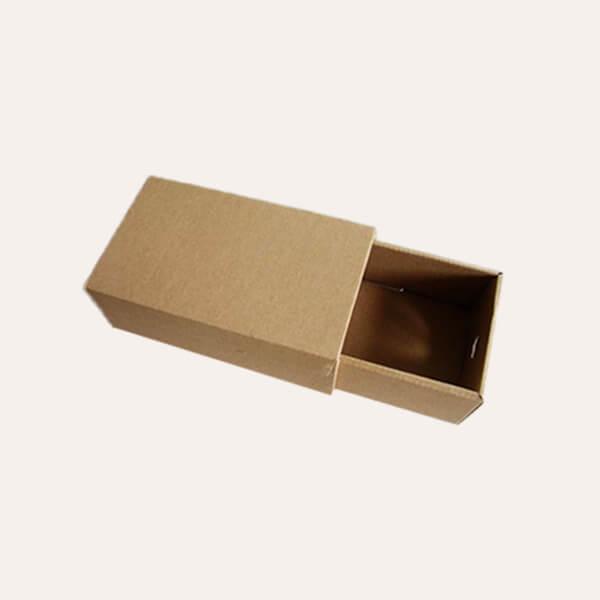When designing and producing custom drawer boxes, it's not just the aesthetics and functionality that matter—packaging regulations also play a crucial role. Whether you're in cosmetics, electronics, food, or retail, understanding packaging compliance ensures your products remain legal, safe, and environmentally responsible.
From material standards to labeling requirements, navigating the regulatory landscape is essential for businesses using custom drawer boxes. This article explores the key packaging regulations you need to consider when producing and shipping custom drawer packaging.
Why Packaging Regulations Matter
Packaging regulations help protect consumers, promote sustainability, and ensure fair trade practices. For businesses, staying compliant:
-
Avoids legal penalties and fines
-
Enhances brand reputation
-
Improves consumer trust
-
Opens access to global markets
For custom drawer boxes—often used in luxury packaging or retail branding—compliance is especially important when shipping nationally or internationally.
Key Regulatory Areas for Drawer Box Packaging
1. Material Compliance
Drawer boxes are commonly made from rigid paperboard, kraft, or chipboard. Depending on your region, there may be requirements such as:
-
FDA compliance (for food or skincare packaging in the U.S.)
-
REACH & RoHS compliance (for materials used in the EU, especially in electronics or luxury goods)
-
Non-toxic inks and adhesives for consumer safety and eco-friendliness
If your drawer boxes come into direct contact with food, cosmetics, or pharmaceuticals, food-grade certification may also be required.
2. Labeling Requirements
Depending on your industry, the drawer box may require legally mandated labeling, including:
-
Country of origin
-
Product weight or volume
-
Ingredients (for cosmetics or food)
-
Warning labels (for choking hazards, chemicals, allergens)
-
Recycling symbols or disposal instructions
In the EU, the CE mark may be required for certain consumer products packaged in drawer boxes.
3. Sustainability & Environmental Compliance
Modern regulations push brands toward eco-friendly packaging. You may need to ensure:
-
Use of recyclable or biodegradable materials
-
Compliance with Extended Producer Responsibility (EPR) programs (e.g., in Germany, France, Canada)
-
Minimal use of excess packaging to comply with anti-waste laws
-
Proper labeling for disposal (e.g., “Please Recycle” or Mobius loop)
California and several European countries have strict packaging waste laws that impact how drawer boxes are made and marketed.
4. Transportation & Shipping Regulations
Drawer boxes intended for shipping may be subject to:
-
Size and weight limits for retail shipping
-
Durability standards for transit protection
-
Hazardous material compliance if packaging restricted products (like lithium batteries or alcohol-based goods)
The International Safe Transit Association (ISTA) provides testing protocols to ensure your drawer box withstands shipping conditions.
5. Industry-Specific Packaging Regulations
Depending on your product type, there may be additional standards:
-
Cosmetics – Must comply with labeling, safety, and hygiene laws (e.g., INCI labeling, shelf life)
-
Jewelry – Requires accurate metal and gemstone labeling (in some countries)
-
Electronics – Packaging must protect against static and environmental damage
-
Children’s Products – Packaging must meet safety standards for small parts and choking hazards
Global Considerations for Drawer Box Packaging
If you’re exporting your products in drawer boxes, ensure you comply with international regulations like:
-
European Union Packaging and Packaging Waste Directive (PPWD)
-
Canada’s Consumer Packaging and Labeling Act (CPLA)
-
U.S. Fair Packaging and Labeling Act (FPLA)
-
UK Packaging Waste Regulations
-
China’s GB Packaging Standards
Each region has different sustainability goals, labeling languages, and enforcement levels—so doing your homework is critical.
Tips for Staying Compliant
-
Work with experienced packaging providers who understand regional laws
-
Use eco-certified materials (e.g., FSC-certified paperboard, soy-based inks)
-
Conduct regular packaging audits
-
Stay informed of evolving packaging laws and bans on single-use plastics
-
Use standard recycling symbols and clear product descriptions
Final Thoughts
Custom cardboard boxes are a powerful packaging choice, especially for boutique and premium products. But to avoid costly penalties or market restrictions, it’s essential to stay compliant with packaging regulations. Whether you're creating boxes for cosmetics, tech, or gifts, your packaging should not only look beautiful—but also meet all relevant safety, labeling, and sustainability requirements.
By partnering with a packaging supplier that understands compliance, you can confidently design custom drawer boxes that impress your customers and meet legal standards across the globe.



